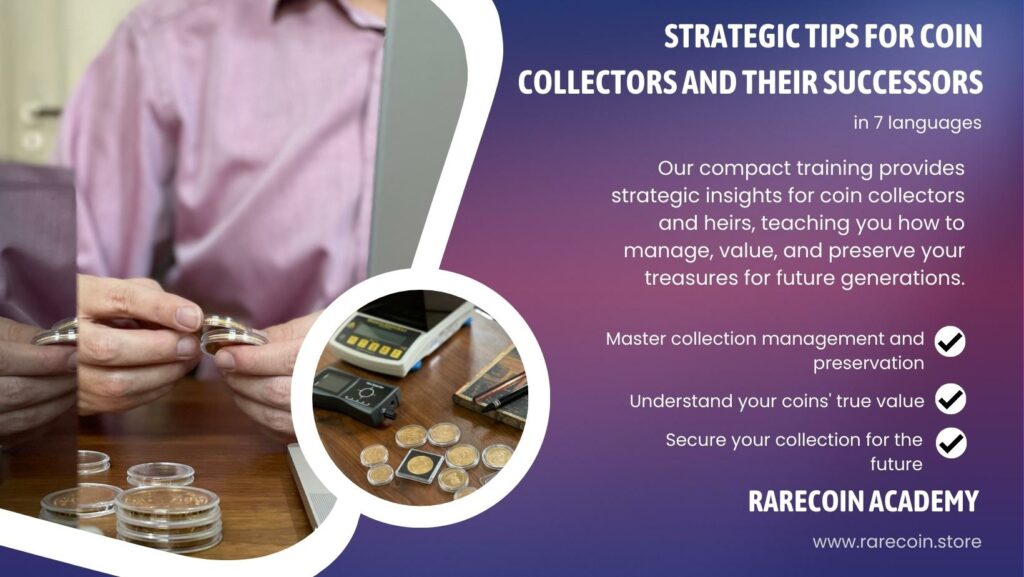
Compact guide for documenting your coin collection
1.2. Guide to Documenting Your Coin Collection – Documenting Your Coin Collection: A Practical Guide
Coin collecting not only offers the thrill of discovery and the compelling stories behind each coin, but also presents the challenge of careful and efficient record keeping. By properly documenting your collection, you not only enhance the collecting experience itself, but also protect the value and legacy of your valuable pieces. In addition, here are some key aspects and considerations that you should take into account to make your numismatic documentation truly effective and complete:
-
The base of each coin :
- Description : What is the name of the coin and what country does it come from? What is its face value?
- Year : In which year was it minted?
- Mintmark : Where and what symbol indicates their origin?
- Rating : What condition is the coin in?
-
Financial Considerations :
- Purchase information : When, where and from whom did you purchase the coin?
- Cost and current value : What price did you pay and how has the value changed?
- Insured Value : If insured, what is the value of your coin in the policy?
-
Origin and history :
- Previous Owners : Who owned the coin before you?
- Proof of authenticity : Are there certificates or other documents that prove authenticity?
- Historical Significance : Are there any special stories or meanings associated with this coin?
-
Physical Details :
- Measurements : What is the weight, diameter and thickness of the coin?
- Material : What material or alloy is it made of?
- Special Features : Does the coin exhibit any unique features or variations?
-
Visual documents :
- Photos : Do you have clear pictures of both sides of each coin? Write down the associated ID to avoid confusion.
- Videos : Do videos exist that highlight important features or conditions?
-
Storage and care :
- Storage : Where do you keep the coin?
- Protection methods : Do you use special packaging or methods to protect the coin?
-
Future plans :
- Selling Intentions : Are you planning to sell the coin?
- Inheritance : Will the coin be inherited or given away?
By creating careful documentation, you not only gain a detailed overview of your collection, but also put yourself in an advantageous position for upcoming sales or exhibitions. Whether you choose a digital method or prefer more traditional ways of documentation is irrelevant. Because in both cases, consistency and accuracy are of the utmost importance. Ultimately, your documentation represents the heart and soul of your collection, linking stories and memories that will be invaluable to future generations.
Finally, and this is an important point, each time you part with a piece in your collection, you should update your records promptly. In this way, you avoid later confusion and the risk of searching in vain for a piece that has already been sold.
Further materials :
The current gold price: That’s how much gold is worth!
You have inherited a gold coin collection, now what?
South African Krugerrand Gold – Special Krugerrand Launch Sets with Mint Marks

